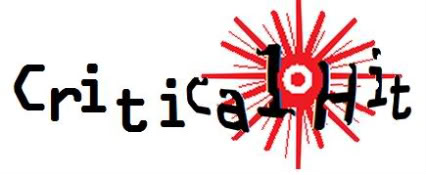
- Format: PC
- Unleashed: Out Now
- Publisher: Blizzard Entertainment
- Developer: Blizzard Entertainment
- Players: 1-4 Online
- Site: http://eu.battle.net/d3/en/
When Diablo 3 originally launched in 2012, it was met with a backlash rarely seen directed at such a beloved developer. The fans were justified, though; mechanics that directly hindered the most fundamental aspects of the genre were introduced. In the game’s first expansion, Reaper of Souls, Blizzard are tasked with not only providing engaging new content, but fixing these problems.
They pulled it off, too. One of the game’s biggest faults was the difficulty progression, forcing you to beat the game at each difficulty – there were four – to unlock the next. Not many people did. This has been replaced with the ability to change difficulty at any time, scaling to your character’s level to maintain a perfect level of challenge. Raising the difficulty requires restarting from the most recent checkpoint but if you’re having a hard time and need to turn it down, you can do so right inside the game’s menu.
The auction house is no more. While it wasn’t an inherently bad idea, it was used to veer the game in a poor direction; players would be swamped in gear useless to them, encouraged to sell it to afford gear more relevant to them. This spat in the face of a genre built upon the excitement of discovery, eschewing it in favour of an economy simulator.
As a result of this, rewards for killing enemies are now almost always relevant to your character – the new system dubbed “Loot 2.0″ – returning the rush of identifying that new legendary weapon or helm to the game. It isn’t perfect, though; a lot of monsters seem to be carrying belts for Barbarians, and we’ve never even played one of them.
The meat of the expansion is the new content, of course. The Crusader is a Templar-style class, a mountain of a man (or lady) decked out in huge, shining armour with a shield and mighty flail. The class we were all clamouring for is finally here.

Crusaders are incredibly versatile, able to flourish in either a high damage or tank role depending on your skills and gear. This versatility extends further when you delve into building around types of damage you’d like to imbue your flail with: While fire and thunder seem to be the most popular, most of them seem viable and will give stat-tinkerers a lot of new toys to play with.
Like all classes, the Crusader has a slew of incredibly entertaining abilities – Sweep Attack, Steed Charge, and Falling Sword in particular being incredibly powerful skills animated to make you feel like Vin Diesel.
While story is far from a draw of the Diablo franchise, Reaper of Souls adds Act V to the game: A journey to prevent the ominous plans of Malthael, the angel of death. While there is a little intrigue in what exactly Malthael plans to do with the stolen black soulstone, the player is never really given much reason to care. The ending is also a bit of a mess, invalidating everything done throughout the game one second and pulling an absurd idea out of nowhere the next – both an obvious set up for the next expansion.
The new locations are evocative and diverse, even within themselves. The city of Westmarch has a Victorian vibe, complete with haunting streetlights and rat-infested sewers known as the “Plague Tunnels.” While the bubbling swamps of Bloodmarsh and the demonic battlefields of Pandemonium pale in comparison, that speaks more to the quality of Westmarch than it detracts from themselves. They’re also huge, with a ton of exploration potential while having few enough main quests for those who just want to rush to the new level cap.

Enemy designs have improved from Diablo 3 where everything looked imported from the cover of an eighties metal album. For the most part you’ll be battling Reapers – Malthael’s gang of fallen angels – or their summoned undead. They’re all tied together by a fiery blue glow, giving them a menacing look while abstaining from the generic reds and browns of typical demon portrayal.
One thing Diablo 3 did well was its boss fights, and these return in just as fine a form. Blizzard have perfected highly mechanical encounters over the years with World of Warcraft, and all that knowledge is used here in the challenging but fair tests of execution against Malthael and friends.
Adventure mode breaks the shackles of the campaign, opening up the entire map of Sanctuary. This new mode provides each of the game’s five zones with bounties – randomly selected quests involving bosses, elite monsters, or encounters – rewarding players with new equipment to improve their characters. It does a great job of incentivising the grind that players were doing anyway, rejuvenating it with some desperately needed variety.
The mode also offers Nephalem Rifts; large, randomised maps with a higher density of monsters and elites to slay. Killing a set amount of them summons a Rift Guardian, a giant beast set to push the players to their limits with the promise of a shower of rewards. The random nature of the rifts inject the game with a ton of variety, ensuring you’ll be experiencing something new every time.
With the game being reworked into the perfect state and given the endless replayability of Adventure Mode, Blizzard have achieved their goals and turned the game around.









Comments